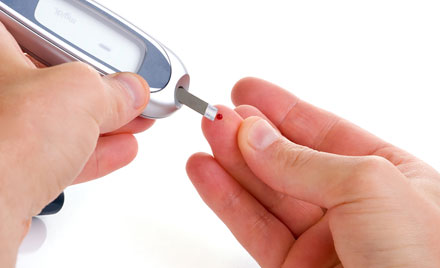Seems like the rule of thumb for food is: “If it tastes good, it’s not good for you.” So much of our good and bad eating habits have to do with the type of foods we were raised around, and our views of food as fuel and sustenance as well as a pleasurable, sensual act (use of the sense of taste.) As Humans, we’re practically hot-wired for pleasurable consumption–that is, craving and eating the foods that makes us feel good–in direct opposition to eating for nutrients and energy. This becomes particularly dangerous with the presence of disease, particularly Diabetes. We compromise our good health when we eat processed foods laden with sugar, preservatives, salt, and fat. And processed foods aren’t good for anyone, let alone diabetics, so best you strike the following 10 Worst Possible Foods To Eat For People With Diabetes from your shopping lists.

Chicken Nuggets
These ubiquitous finger foods dip nicely and satisfy hunger, but you’d do better to go for grilled chicken strips or a skinless breast. Whether you get them in a restaurant or out of the freezer section, chicken nuggets are made with heavy breading (that you may forget to count against your carbs for the day) and usually more salt, fat, and preservatives than anyone needs.

White Rice
Sure, white rice is inexpensive and easy to cook. But like all processed foods made with refined flour, including white bread and white pasta, it offers very little nutrition in return for raising your blood sugar, and it could be loaded with preservatives, too. If you like rice and want better control of your diabetes, try some of the wild rice blends (as well as whole-grain breads, pastas, and cereals). They take a little longer to cook and they do cost more, but they’re healthier and tastier.
French Fries
Few people realize how many calories even a small serving of French fries can contain. This can make managing your weight and your diabetes difficult, especially if you eat them frequently. And like white rice, they don’t offer much in return for their effect on blood sugar levels. If you really like fries, bake them yourself at home, without oil. Use skin-on sweet potatoes and skip the frozen supermarket varieties, which are often loaded with preservatives.
Canned Fruit in Heavy Syrup
Eating more fruits and vegetables helps people with type 2 diabetes stay healthy and feel full. If your budget is tight, canned produce is an option — it lasts longer and tastes good. Unfortunately, if you don’t read labels carefully, you could end up with fruit that has been canned in heavy, sugary syrup. You can lighten the sugar load of these processed foods by draining and rinsing the fruit, but it’s better to buy fruit canned in its own juice instead of syrup.
Potato Chips
When you have to watch your weight, as many people with type 2 diabetes must do, potato chips and other fried snacks can quickly undermine your diet efforts. These processed foods add to your intake of calories, salt, and preservatives without providing much, if any, nutrition or fiber, which can help slow digestion a bit. Plan ahead for those times when you want a crunchy treat and have veggie sticks (cut-up carrots, celery, and zucchini are great) and a low-fat, low-sugar dip you enjoy at the ready.
Soda
Having a lot of sodas, even sugar-free sodas, in your diet frequently correlates with a diabetes diagnosis. Most people switch to sugar-free or try to give up sugary drinks entirely to better manage their diabetes (and their weight). If it’s the tingly sensation of soda you crave, try club soda with a touch of fruit juice for flavor. Go easy on the fruit juice, however, because it’s also high in sugar.
Foods With High-Fructose Corn Syrup
High-fructose corn syrup is a common ingredient in many packaged foods like cookies and snack cakes, and it’s the focal point of a controversy about its effect on weight, insulin, and health. Many foods that you might not realize contain HFCS actually do, such as sweet pickle relish, ketchup, jams and jellies, and salad dressings. If you’re wary of including this form of sweetener and all its calories in your diabetes diet, simply choose products that list sugar, not high-fructose corn syrup, as an ingredient. Keep in mind though that both sugar and high-fructose corn syrup add calories to food, and try to develop a taste for foods that are less sweet to better manage your type 2 diabetes.
Processed Meats
Although they don’t usually contain sugar, processed meats, which are heavy on salt and preservatives, seem to be linked to an increased risk of diabetes. Instead of relying on lunch meats, deli meats, and various kinds of sausages, go for meat that is closer to its natural state. Try using leftovers from a roasted chicken for a lunchbox sandwich, for example. Also, build in more meatless options for type 2 diabetes control.
Fast-Food Hamburgers
This fast-food staple may be a diabetes risk factor for you. Research shows that African-American women who eat hamburgers in a restaurant two or more times a week are much more likely to receive a diabetes diagnosis than those who do not. A small, plain hamburger probably isn’t the root of this problem — it’s more likely that the oversized patties, buns, and toppings are contributing to these statistics. If you’re eating out, opt for a small, grilled-chicken sandwich with lots of veggies instead. Dr. Hannon recommends researching restaurant menus in advance to plan healthy choices.
Source: EveryDay Health
Share this content:








